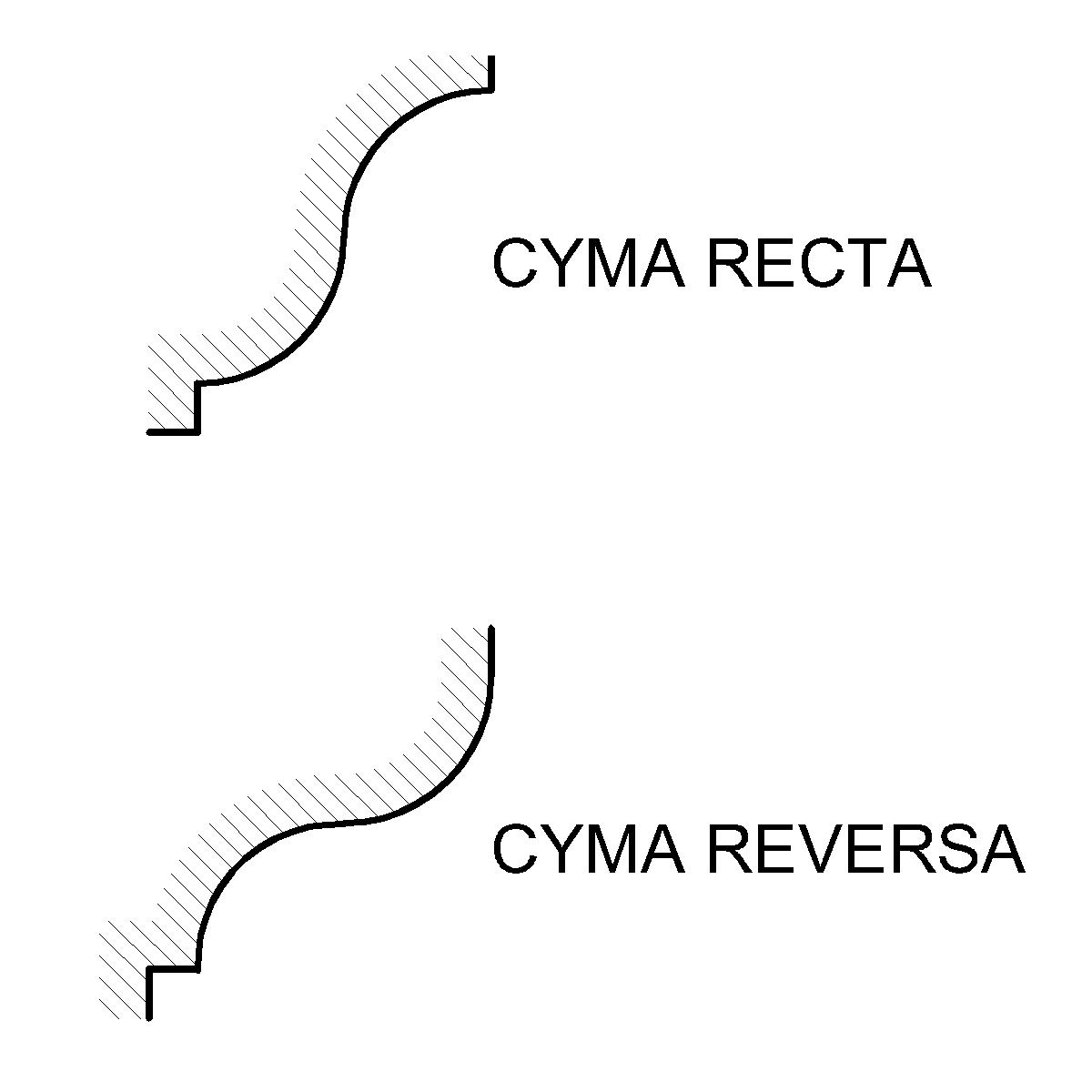Echinus (molding) on:
[Wikipedia]
[Google]
[Amazon]
The ovolo or echinus is a convex decorative molding profile used in architectural ornamentation. Its profile is a quarter to a half of a more or less flattened circle.
The 1911 edition of ''Encyclopædia Britannica'' says: The fundamental element of ornamental, architectural molding that is concave (rather than convex like the ovolo) is found in
The fundamental element of ornamental, architectural molding that is concave (rather than convex like the ovolo) is found in
adapted from Ital. ''uovolo'', diminutive of ''uovo'', an egg; other foreign equivalents are Fr. ''ove'', ''échine'', ''quart de rond''; Lat. ''echinus''...The "egg and tongue" referred to, also known ass used S, or s, is the nineteenth letter in the Latin alphabet, used in the modern English alphabet, the alphabets of other western European languages and others worldwide. Its name in English is ''ess'' (pronounced ), plural ''esses''. History ...in architecture, ora convex moulding known also as the echinus, which in Classic architecture was invariably carved with the egg and tongue. In Roman and Italian work the moulding is called by workmen a quarter round.
egg-and-dart
Egg-and-dart, also known as egg-and-tongue, egg-and-anchor, or egg-and-star, is an ornamental device adorning the fundamental quarter-round, convex ovolo profile of moulding, consisting of alternating details on the face of the ovolo—typicall ...
, egg-and-anchor, or egg-and-star, refers to alternating egg and V-shapes enriching the surface of the concave ovolo in many early cases.
The description of ovolo as the fundamental convex quarter-round element underlying or being combined with other elements to compose molding, details on column capitals, and other architectural ornamentation remains in common use, as evidenced by the description by Lewis and Darley (1986) of the ovolo as a " nvex moulding... usually a quarter of a circle in section", which also notes that it is "often enriched with egg and dart or similar ornament".
Ovolo adornment by the egg-and-dart element was used on Ionic capital
The Ionic order is one of the three canonic orders of classical architecture, the other two being the Doric and the Corinthian. There are two lesser orders: the Tuscan (a plainer Doric), and the rich variant of Corinthian called the composite or ...
s by ancient Roman and ancient Greek
Ancient Greek includes the forms of the Greek language used in ancient Greece and the ancient world from around 1500 BC to 300 BC. It is often roughly divided into the following periods: Mycenaean Greek (), Dark Ages (), the Archaic p ...
builders (e.g., at the Erechtheion
The Erechtheion (latinized as Erechtheum /ɪˈrɛkθiəm, ˌɛrɪkˈθiːəm/; Ancient Greek: Ἐρέχθειον, Greek: Ερέχθειο) or Temple of Athena Polias is an ancient Greek Ionic temple- telesterion on the north side of the Acropoli ...
), and continue to adorn capitals of modern buildings built in Classical styles (e.g., the Ionic capitals of the Jefferson Memorial
The Jefferson Memorial is a presidential memorial built in Washington, D.C. between 1939 and 1943 in honor of Thomas Jefferson, the principal author of the United States Declaration of Independence, a central intellectual force behind the A ...
in Washington, D.C.
)
, image_skyline =
, image_caption = Clockwise from top left: the Washington Monument and Lincoln Memorial on the National Mall, United States Capitol, Logan Circle, Jefferson Memorial, White House, Adams Morgan, ...
), and to find use in Neoclassical architecture
Neoclassical architecture is an architectural style produced by the Neoclassical movement that began in the mid-18th century in Italy and France. It became one of the most prominent architectural styles in the Western world. The prevailing style ...
.
 The fundamental element of ornamental, architectural molding that is concave (rather than convex like the ovolo) is found in
The fundamental element of ornamental, architectural molding that is concave (rather than convex like the ovolo) is found in cavetto
A cavetto is a concave moulding with a regular curved profile that is part of a circle, widely used in architecture as well as furniture, picture frames, metalwork and other decorative arts. In describing vessels and similar shapes in pottery, ...
or hollow chamfering moldings, which also usually presents a quarter-round cross-section, albeit concave. Ovolo and cavetto elements can be combined to form compound moldings; most simply, with the convex ovolo molding below the cavetto, it is known as ''cyma recta'' (for its wave-like cross-section), a type of common edge profile commonly referred to as ogee
An ogee ( ) is the name given to objects, elements, and curves—often seen in architecture and building trades—that have been variously described as serpentine-, extended S-, or sigmoid-shaped. Ogees consist of a "double curve", the combinat ...
. The compound molding with the concave cavetto below and the convex ovolo above is termed ''cyma reversa.'' In modern residential applications, the ovolo profile is often used as the inside edge of stile and rail interior and cabinet
Cabinet or The Cabinet may refer to:
Furniture
* Cabinetry, a box-shaped piece of furniture with doors and/or drawers
* Display cabinet, a piece of furniture with one or more transparent glass sheets or transparent polycarbonate sheets
* Filing ...
doors.
The ''Britannica'' article goes on to note that the echinus synonym of ovolo should "not be confounded with the echinus of the Greek Doric capital", which is "of a more varied form and of much larger dimensions than the ovolo, which was only a subordinate moulding."
See also
*Cymatium
Cymatium, the uppermost molding at the top of the cornice in the classical order, is made of the s-shaped cyma molding (either ''cyma recta'' or ''cyma reversa''), combining a concave cavetto with a convex ovolo. It is characteristic of Ionic co ...
References
{{reflist Ornaments